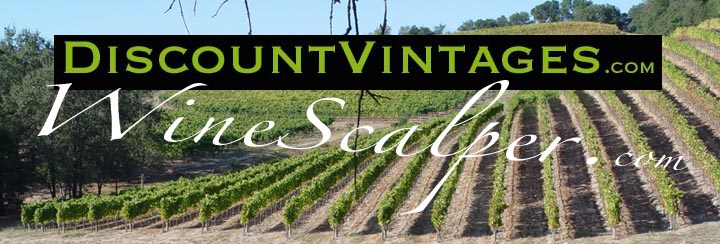
Adobe PDF File eBook Ordered From This Website Will Be Delivered Within 24-48 Hours from your confirmed order as we manually process each order. Thank you for your understanding.
AVAILABLE FOR SALE


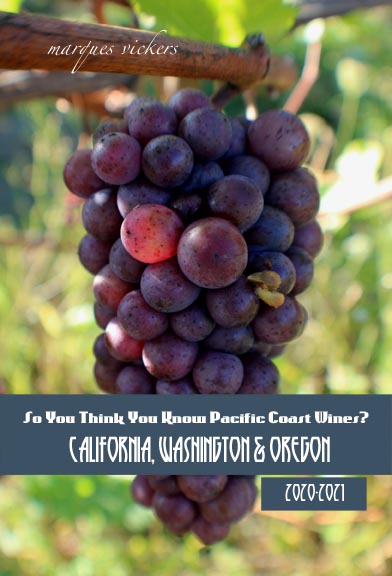
So You Think You Know Pacific Coast Wines (2020=2021 Edition)
“So You Think You Know Pacific Coast Wines” is designed to simplify your understanding by identifying growing trends, grape descriptions, the histories and future direction of the California, Washington and Oregon wine industry. This book concisely profiles each state’s leading growing regions, rainfall statistics and prominent grapes based on the most recent available harvest data.
The 2019-2020 edition is ideal for wine collectors, winemakers and anyone who appreciates a world class Pacific Coast grown vintage. The following facts are just ten from hundreds of little known essentials included in the book:
1. California is the top producing state, Washington second and Oregon fourth (behind New York) in American wine grape production. California harvested over 3.9 million tons and Washington 201 thousand tons during the 2019 harvest. Oregon harvested 101 thousand tons during the 2018 harvest. Washington’s harvest is only 5.2% and Oregon’s 2.6% of California’s overall production. Oregon’s production is 50% of Washington’s.
2. Cabernet Sauvignon is California’s second most popular and highest priced red wine grape. It is Washington’s most popular and fifth highest priced and Oregon’s fifth most popular grape. The average Napa Valley grown grape is priced between two and sixteen times more than competing states and regions within California.
3. California harvested 3.9 million tons of wine grapes during the 2019 harvest, a 9.4% reduction from the 2018 largest historic harvest.
4. California has 4,610+, Washington 1000+, and Oregon 790+ wineries.. California has seventeen designated growing regions. Washington has fourteen and Oregon five.
5. Washington’s red grape varietals harvested 121 thousand tons in 2019. The closest California equivalent was the Monterey and San Benito Counties growing region (122.3 thousand tons).
6. Pinot Noir is Oregon’s largest harvested grape accounting for 58.8% of the state’s wine grape production and fifth highest priced. It is California’s fifth most popular.
7. Oregon’s production most closely compares with the Napa Valley growing region of California (159.7 thousand tons in 2019).
8. Chardonnay is California’s largest harvested grape accounting for 36% of the white wine grapes and 16.3% of the state’s overall yield. It is Washington’s second largest wine grape, most popular white wine grape. It is Oregon’s third largest produced.
9. California’s wines were considered the equal to European’s elite vintages in 1890. Following the phylloxera pest and Prohibition, the state would not regain their global reputation until the mid-1970s. Washington’s international reputation began during the 1990s and Oregon’s during the 1980s.
10. Real Estate valuation remains the most important financial consideration influencing the value of varietal grapes. Top-tiered Washington vineyards have commanded pricing between $75,000-$80,000 per acre. Large established vineyards have been documented to sell for $25,000-$30,000 and bare unplanted terrain often averages $10,000-$15,000 per acre. In Napa County, secondary vineyard lands begin at $90,000-$165,000 an acre. Prime vineyards range between $225,000-$300,000 and upwards per acre.
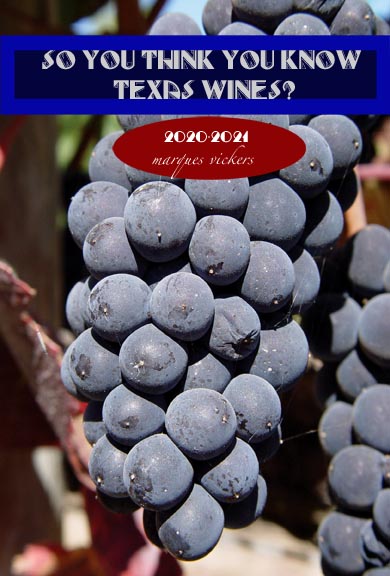
So You Think You Know Texas Wines: Demystifying the Economics of Texas Wines ( 2020-2021)
“So You Think You Know Texas Wines” is designed to simplify your understanding by identifying growing trends, grape descriptions, and future direction of the Texas wine industry. This book concisely profiles each of the state’s leading growing regions and prominent grapes based on the most recent available harvest data from 2019. The edition also includes comparison with the California, Washington and Oregon wine regions.
The 2020-2021 edition is ideal for wine collectors, winemakers and anyone who appreciates a Texan grown vintage. The following facts are from hundreds of little known essentials included in the book:
1. Texas harvested 14.2 thousand tons during the 2019 harvest. California harvested 4.28 million tons and Washington 261 thousand tons during the 2018 harvest. Oregon harvested 91.3 thousand tons during 2017.
2. Texas’ wine grape harvest is 15.5% of Oregon’s, 5.4% of Washington’s and .03% of California’s annual harvest. Washington’s harvest is only 6% and Oregon’s 2.1% of California’s overall production. Oregon’s production is 35% of Washington’s.
3. California has 3,670+, Washington 940+, Oregon 725+, and Texas approximately 200+ wineries. California has seventeen, Washington fourteen, while Oregon and Texas have designated five growing regions.
4. Texas has eight designated AVAs (American Viticultural Areas) including Bell Mountain, Escondido Valley, Fredericksburg, Mesilla, Texas Davis Mountains, Texas High Plains, Texas Hill Country and Texoma.
5. Cabernet Sauvignon is Texas’ most popular but only thirtieth highest priced wine grape. It is California’s second most popular and second highest priced red wine grape. It is Washington’s most popular and sixth highest priced and Oregon’s sixth most popular and highest priced wine grape.
6. Tempranillo is Texas’ second most popular and seventh highest priced wine grape averaging $1720 per ton. It is California’s thirteenth and Oregon’s fourth most popular red wine grape.
7. The High Plains and Panhandle growing region is the largest Texas production center harvesting 72.6% of the state’s grapes.
8. During 2019, Texas’ state total production ratio was 71% red wine grapes and 29% white wine grapes. Total Bearable acreage is 73% red wine and 27% white wine grapes.
9. Between 2015 and 2019, production of the Muscat Canelli grape dropped 56.6% in Texas overall and 47.8% in the High Plains and Panhandle growing region. The grape in 2015 was Texas’ largest produced varietal.
10. Based on 2019 non-bearing acreage figures, the six most likely statewide grapes to increase in production are Cabernet Sauvignon, Tempranillo, Blanc du Bois, Black Spanish (Lenoir), Merlot and Mourvèdre. Non-bearing acreage represents planted vineyards whose young grapes have not been included into production statistics. They may also reflect damaged and destroyed vineyards that did not add to the production totals.
11. Production of Mourvèdre jumped over 700% in the High Plains and Panhandle growing region between 2015 and 2019 making it the second largest grape. The grape is now the third largest produced in the state.
12. Blanc du Bois and Black Spanish grapes are the dominant grapes produced in the Southeast Texas and Gulf Coast growing region comprising 80.1% of production. Combined in 2019, they represent 63.3% of statewide production in those grapes.
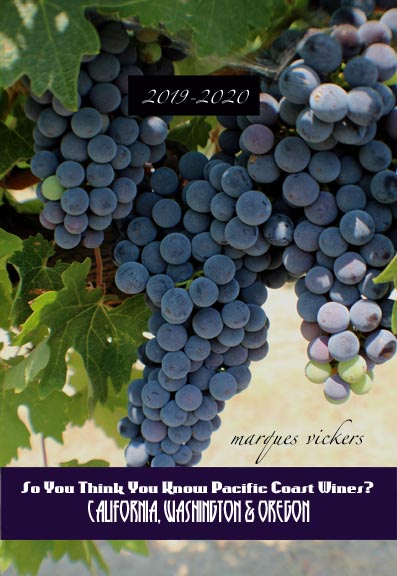
So You Think You Know Pacific Coast Wines (2019-2020 Edition)
“So You Think You Know Pacific Coast Wines” is designed to simplify your understanding by identifying growing trends, grape descriptions, the histories and future direction of the California, Washington and Oregon wine industry. This book concisely profiles each state’s leading growing regions, rainfall statistics and prominent grapes based on the most recent available harvest data. The 2019-2020 edition is ideal for wine collectors, winemakers and anyone who appreciates a world class Pacific Coast grown vintage.
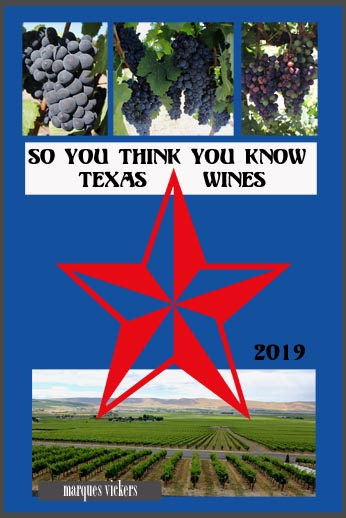
So You Think You Know Texas Wines? (2019)
“So You Think You Know Texas Wines” is designed to simplify your understanding by identifying growing trends, grape descriptions, and future direction of the Texas wine industry. This book concisely profiles each of the state’s leading growing regions and prominent grapes based on the most recent available harvest data from 2017. The edition also includes comparison with the California, Washington and Oregon wine regions. The 2019 edition is ideal for wine collectors, winemakers and anyone who appreciates a Texan grown vintage.
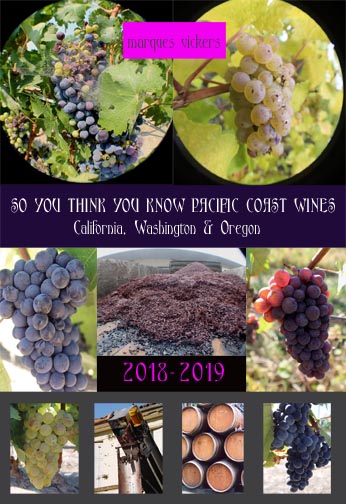
So You Think You Know Pacific Coast Wines? (2018-19)
Demystifying the Caliornia, Washington and Oregon Wine Industry
“So You Think You Know Pacific Coast Wines” is designed to simplify your understanding by identifying growing trends, grape descriptions, the histories and future direction of the California, Washington and Oregon wine industry. This book concisely profiles each state’s leading growing regions, rainfall statistics and prominent grapes based on the most recent available harvest data. The 2018-19 edition is ideal for wine collectors, winemakers and anyone who appreciates a world class Pacific Coast grown vintage.
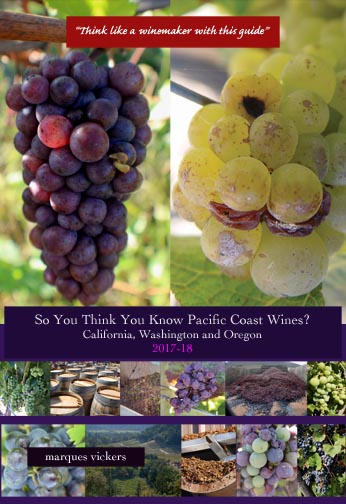
So You Think You Know Pacific Coast Wines? (2017-18)
Demystifying the California, Washington and Oregon Wine Industry
“So You Think You Know Pacific Coast Wines” is designed to simplify your understanding by identifying growing trends, grape descriptions, the histories and future direction of the California, Washington and Oregon wine industry. This book concisely profiles each state’s leading growing regions, rainfall statistics and prominent grapes based on the most recent available harvest data. The 2017-2018 edition is ideal for wine collectors, winemakers and anyone who appreciates a world class Pacific Coast grown vintage.
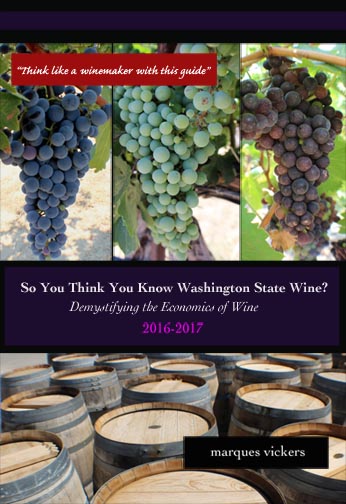
"So You Think You Know Washington State Wines? (2016-17) Demystifying the Economics of Wine"
“So You Think You Know Washington State Wines?” is designed to simplify your understanding by identifying growing trends, grape descriptions and the history of Washington wine production. The edition profiles the 15 top wine grapes and the unique aspects of the state’s growing sectors. The 62-page edition is idea for wine collectors, winemakers and anyone who appreciates a world class Washington vintage.
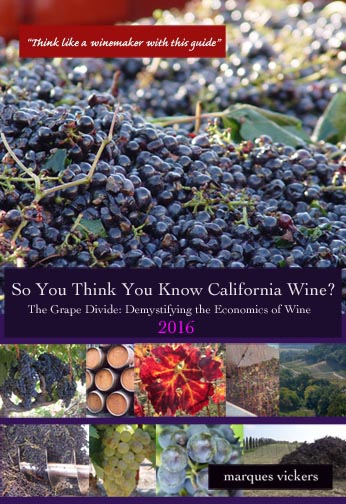
"So You Think You Know California Wines? (2016) The Grape Divide: Demystifying the Economics of Wine"
“So You Think You Know California Wines” is designed to simplify your understanding by identifying growing trends, grape descriptions and the history of California wine production. The edition profiles the 27 top wine grapes and principal growing regions. The edition is idea for wine collectors, winemakers and anyone who appreciates a world class California vintage. Contents include hundreds of little known facts about California wines and the 2015 grape harvest.
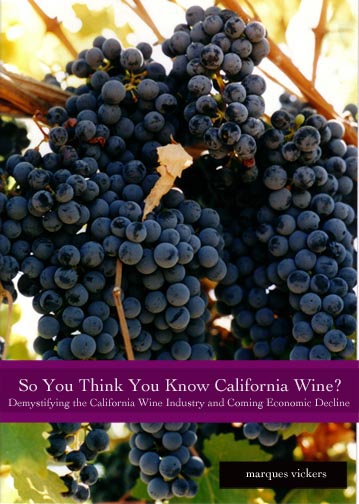
"SO YOU THINK YOU KNOW CALIFORNIA WINE? Demystifying the California Wine Industry and Coming Economic Decline (2015)"
“So You Think You Know California Wine? Demystifying the California Wine Industry and Coming Economic Decline” is a photographic edition portraying the beauty and landscape of the northern California wine region during each stage of the annual wine harvest. Photographer Marques Vickers 80+ images captures the diversity of the vineyard terrain and majesty of the individual vines from his artist perspective. The photography is supplemented by his observations and projections regarding the 2014 final grape crush report released on March 10, 2015 by the United States Department of Agriculture, Pacific Field Office. Vickers addresses the three most strident issues: water, real estate value levering and overproduction that peril the continued stability of the industry.







